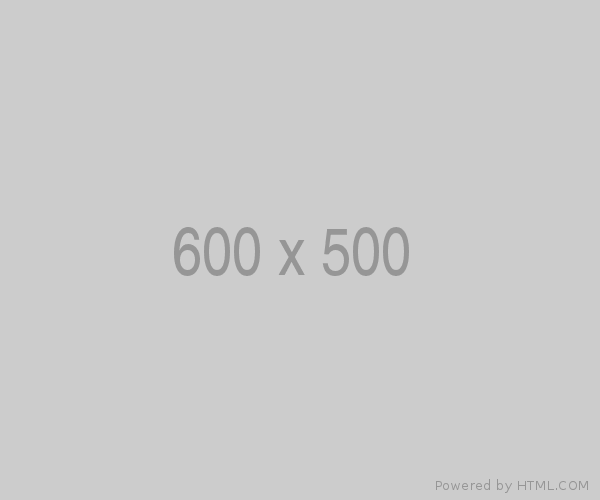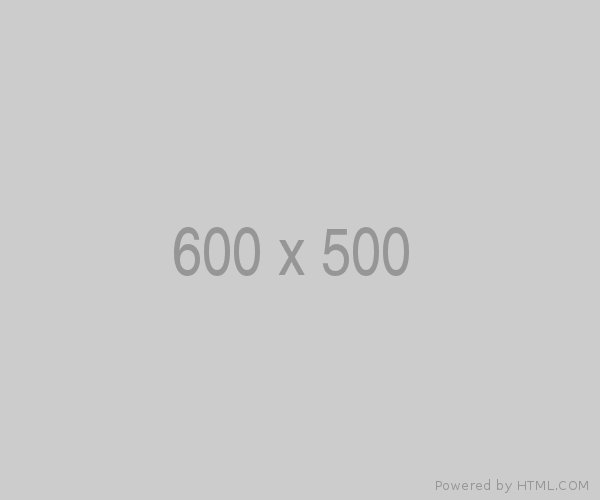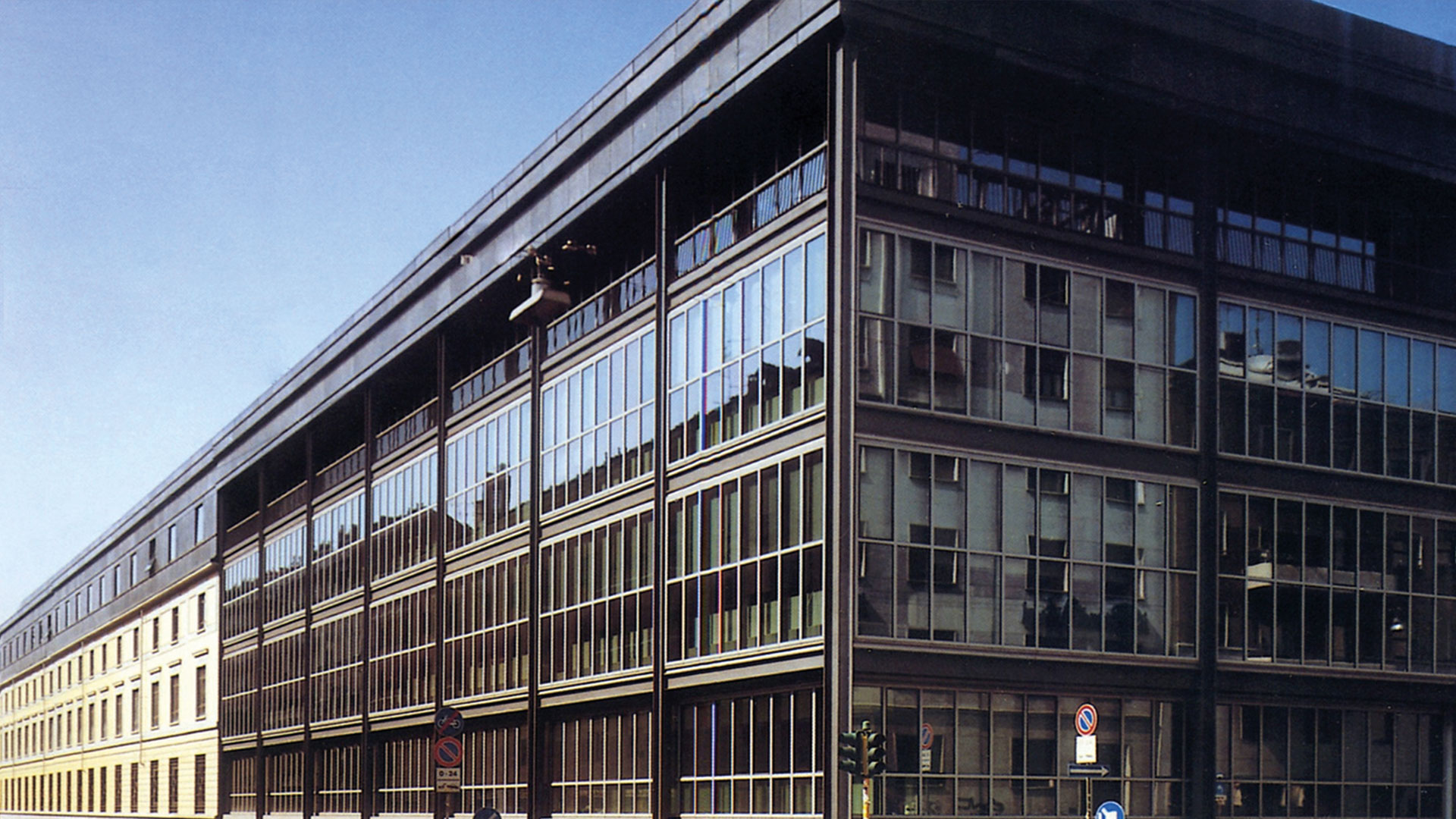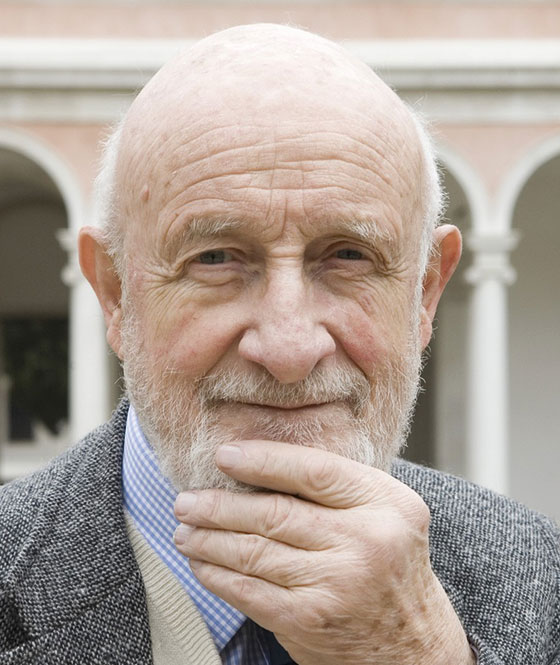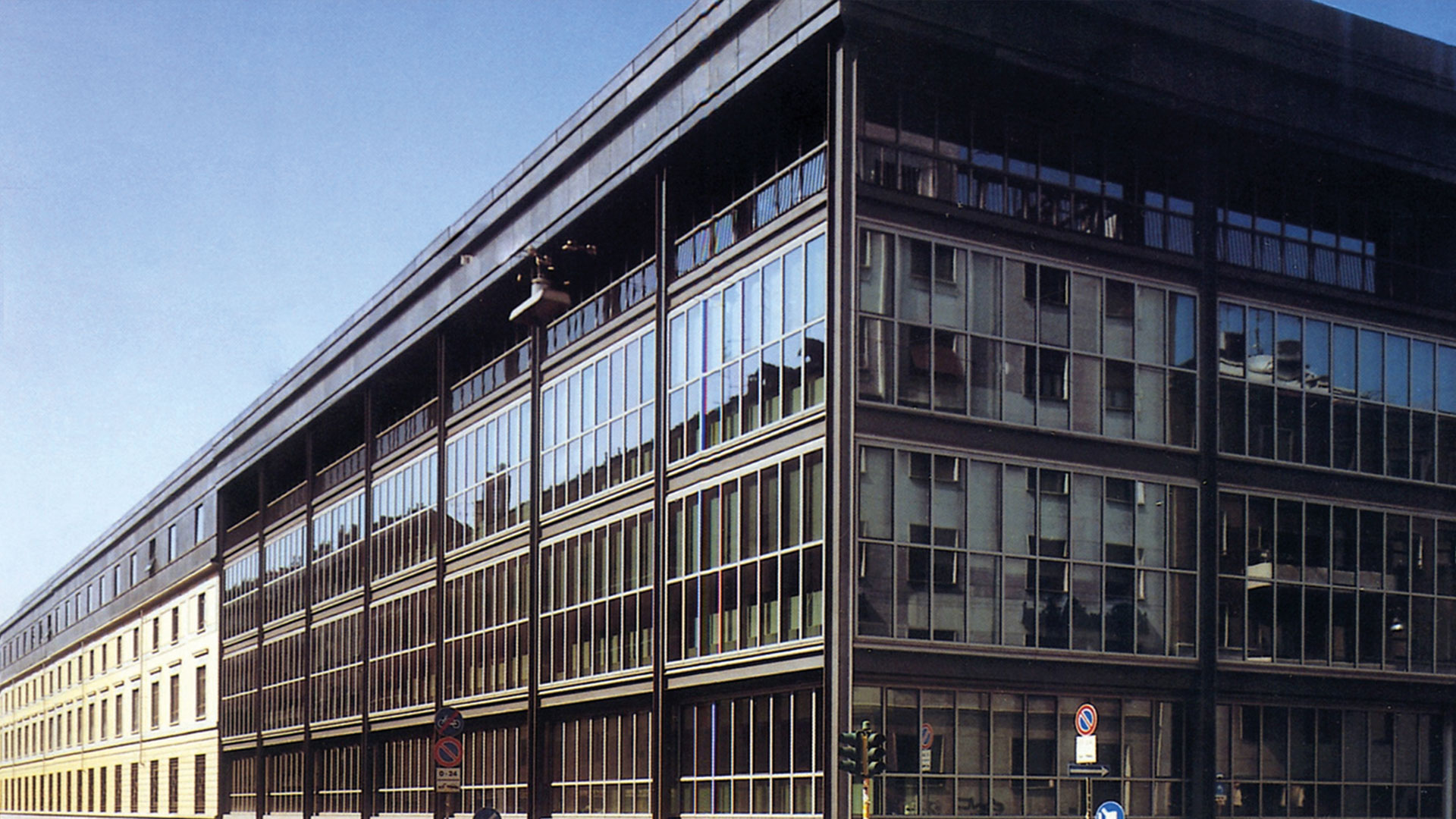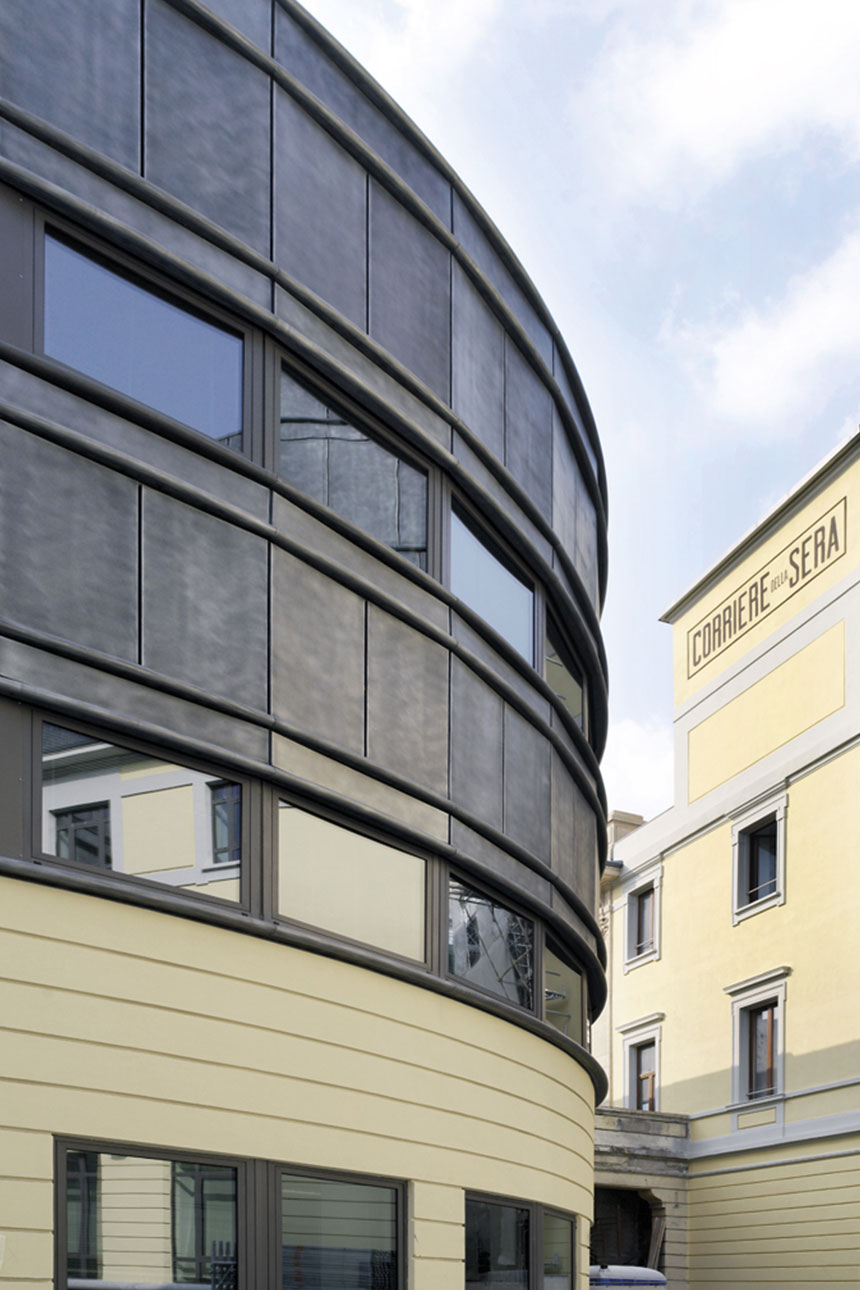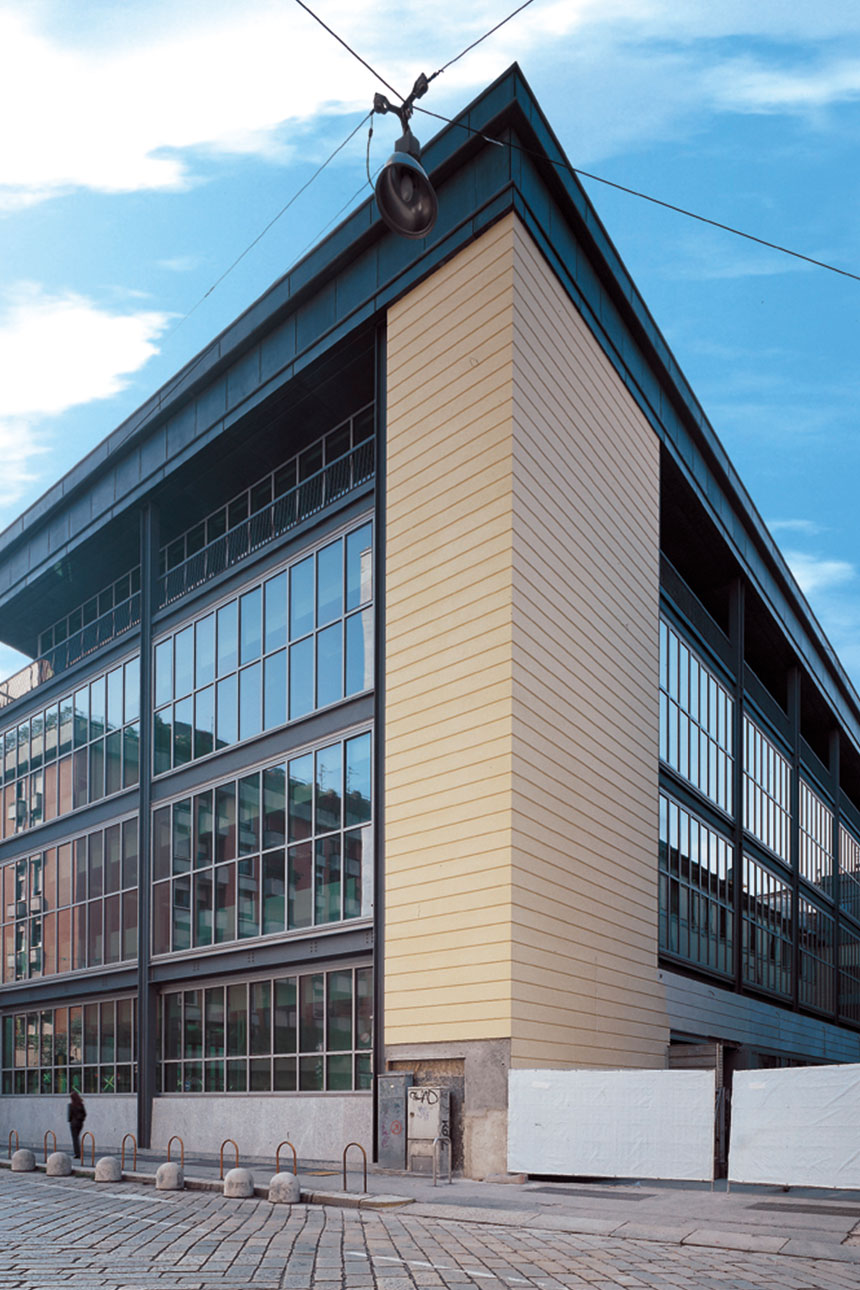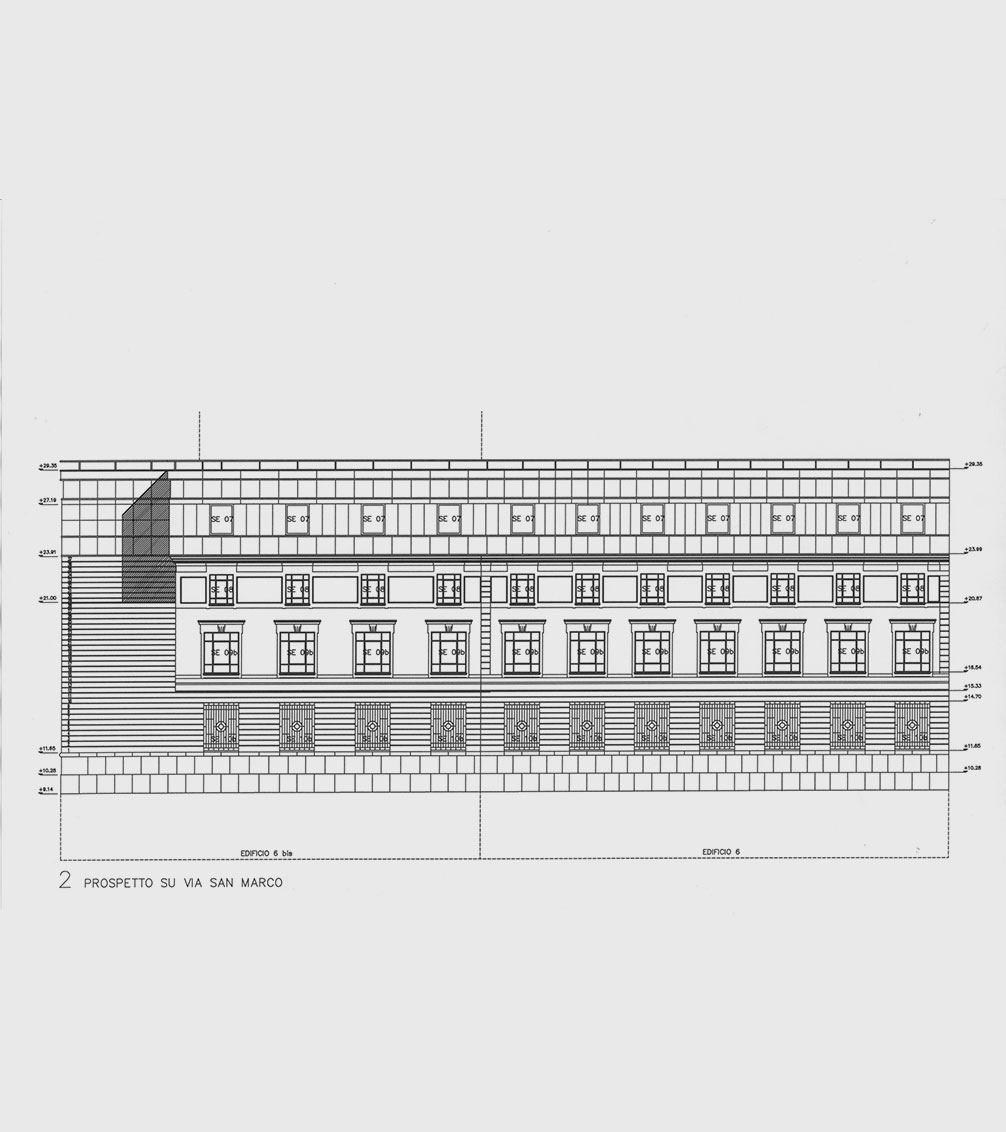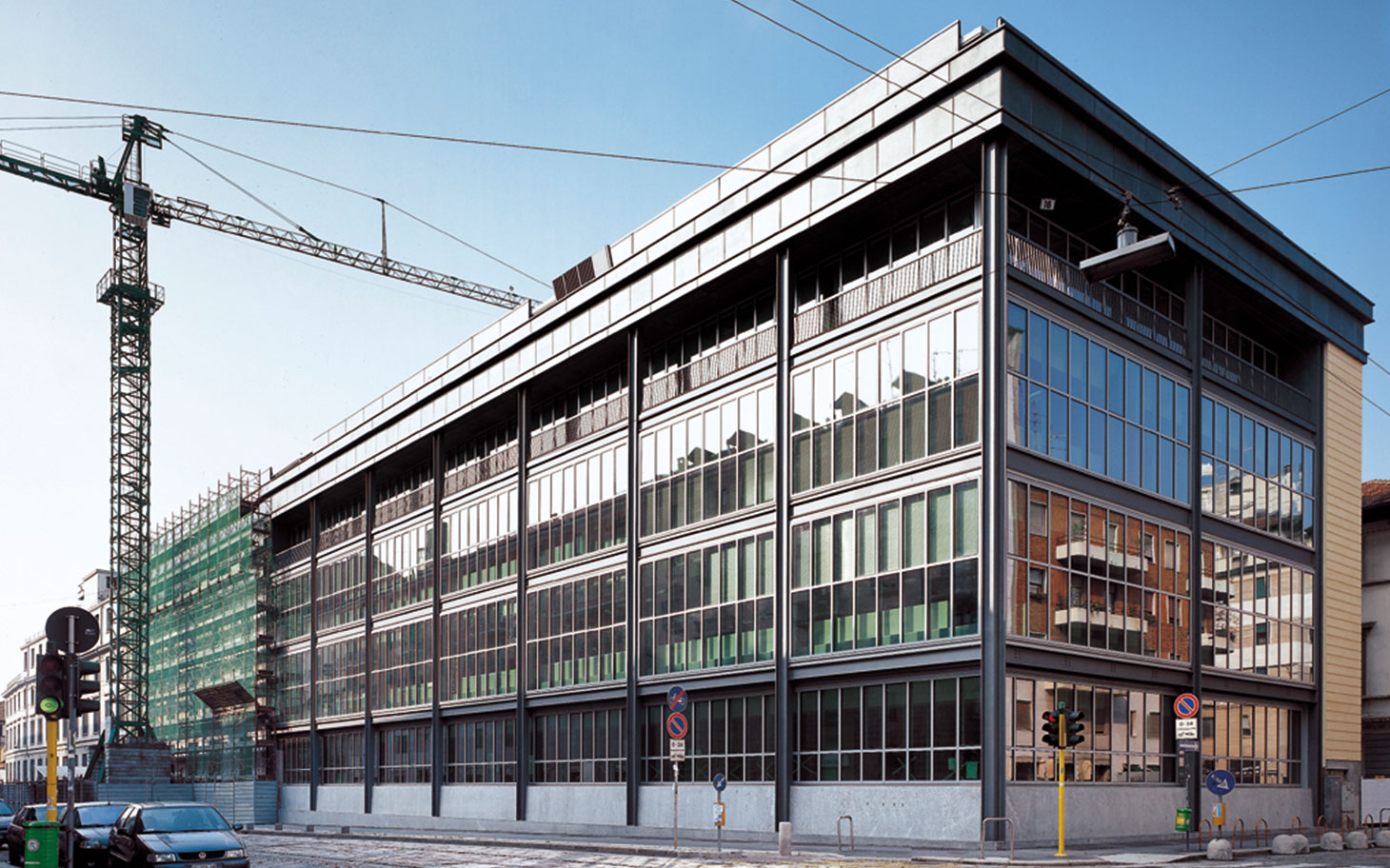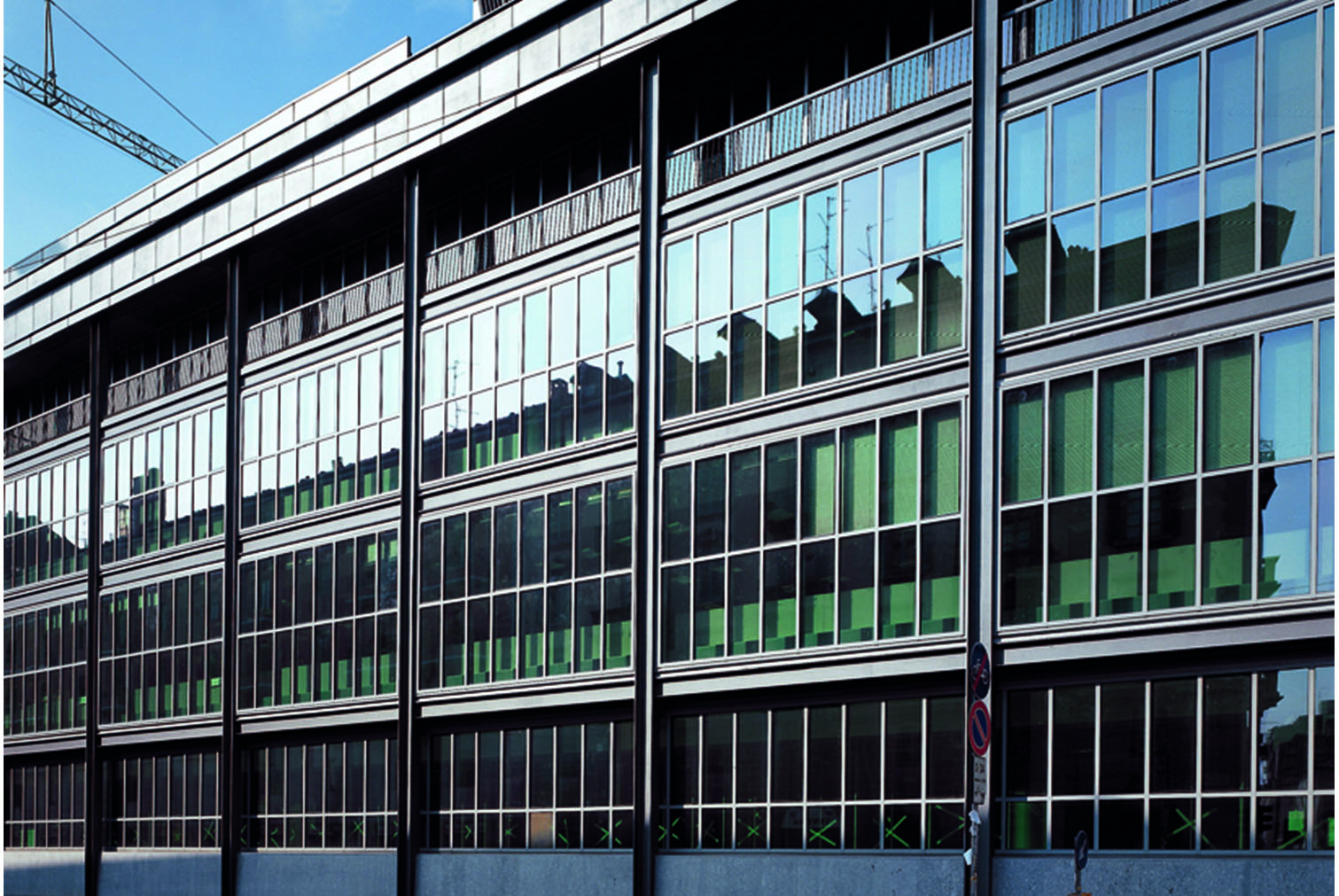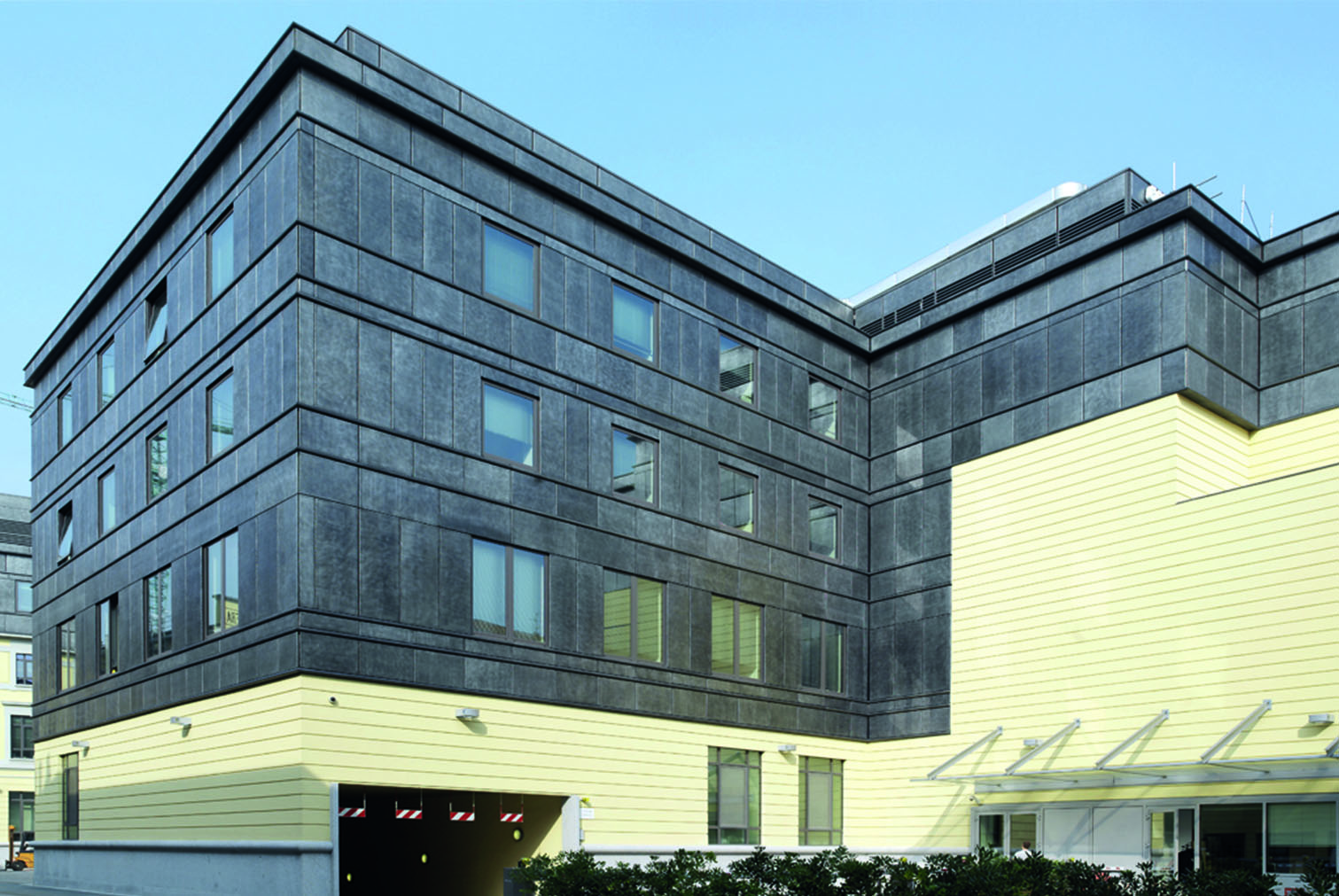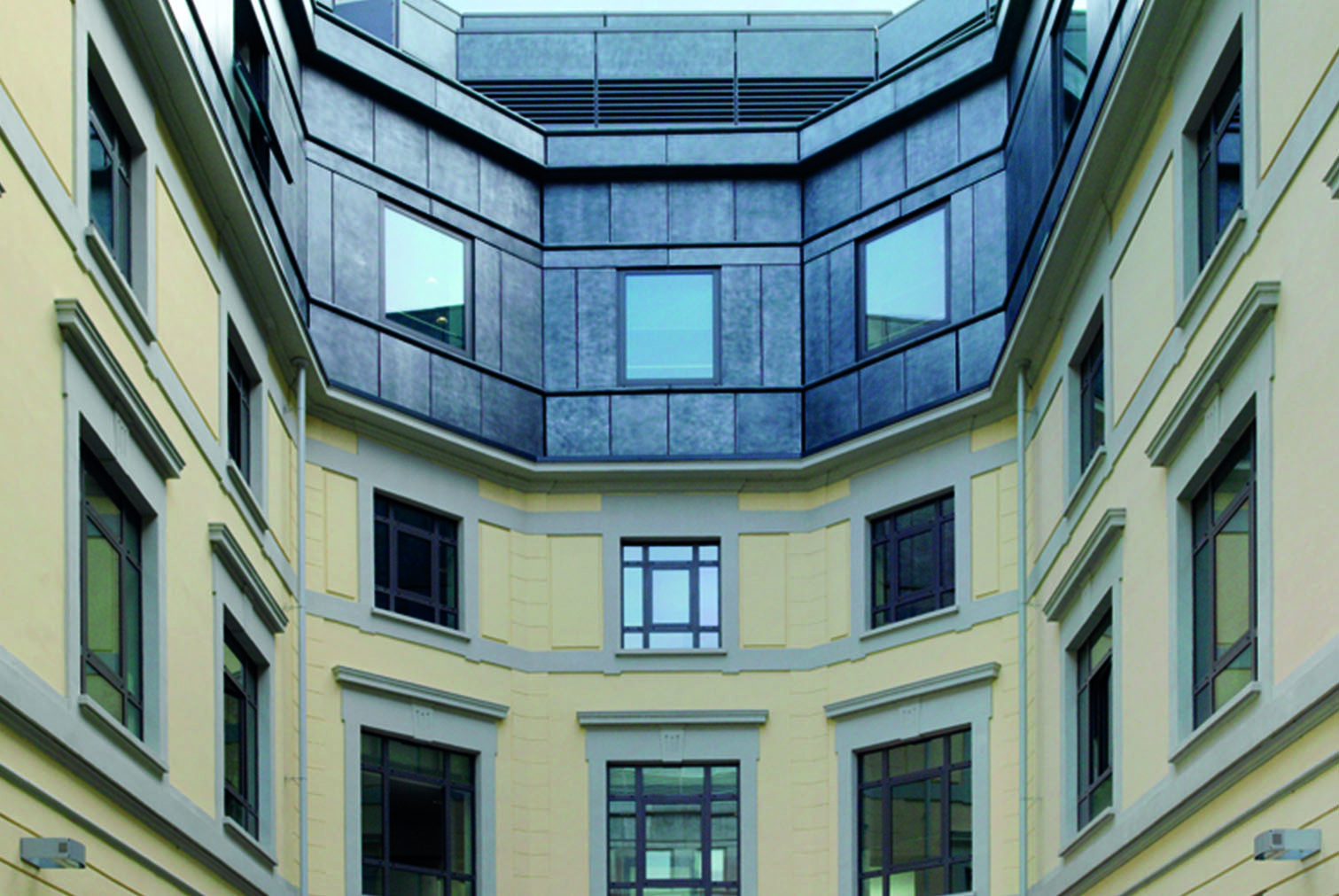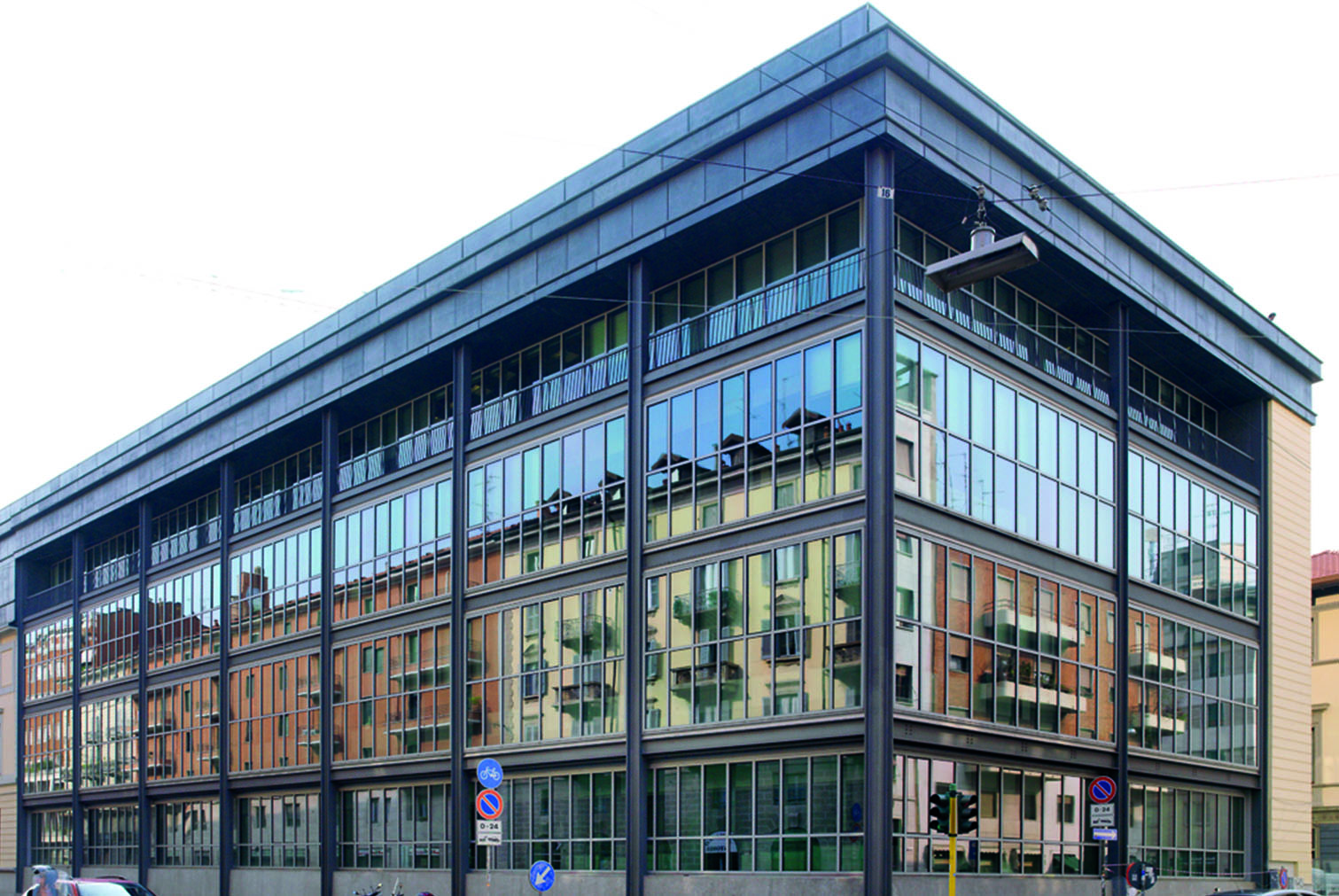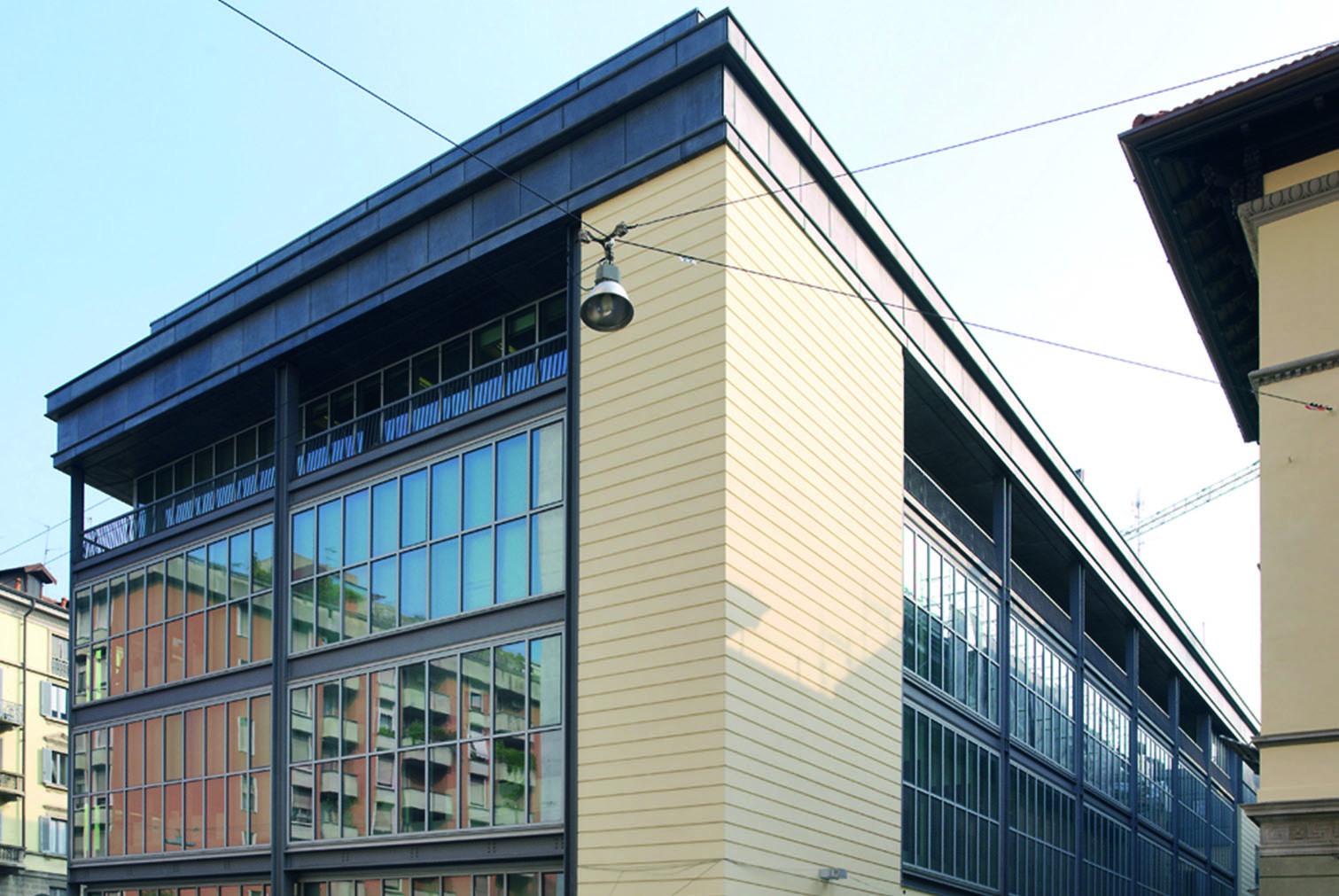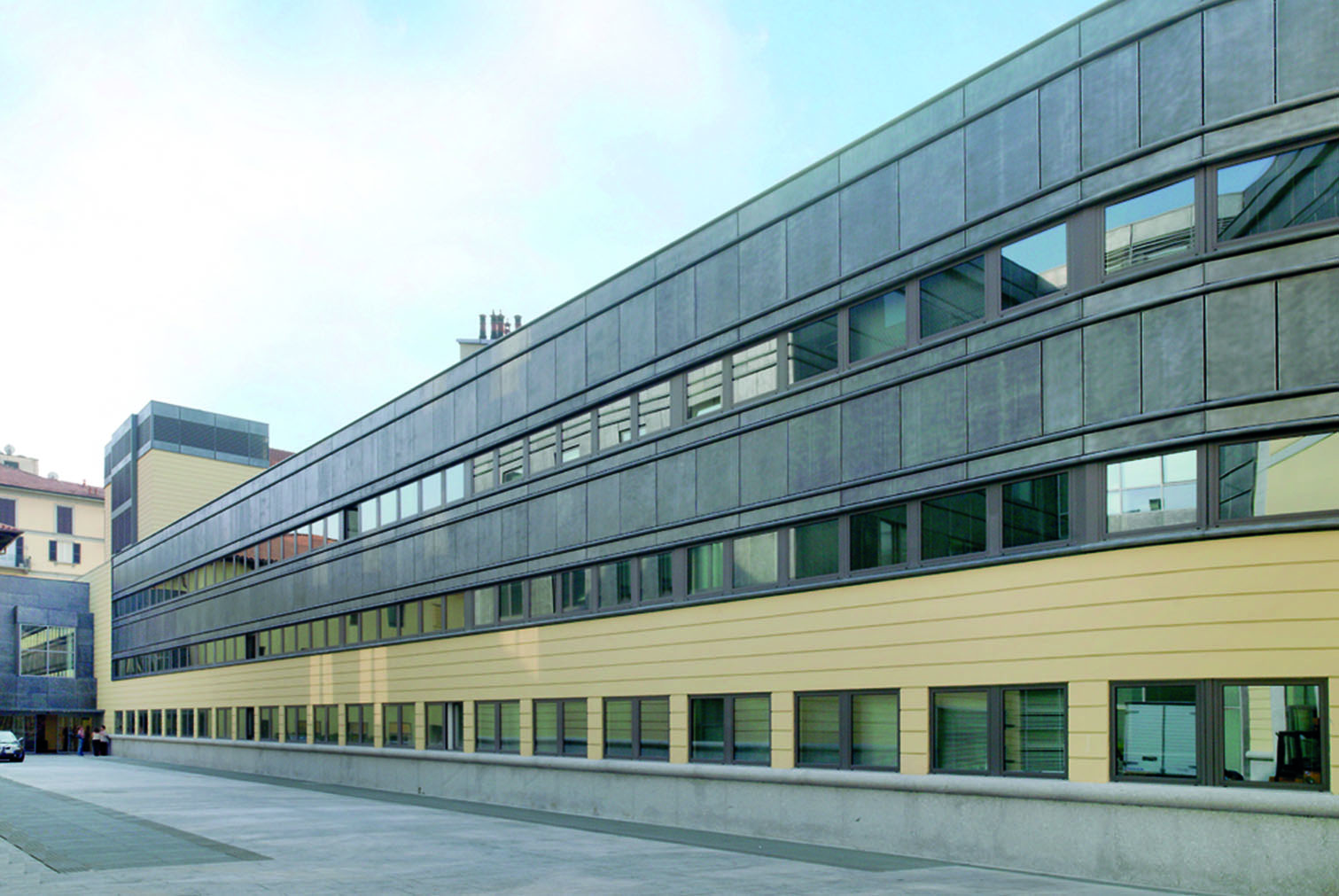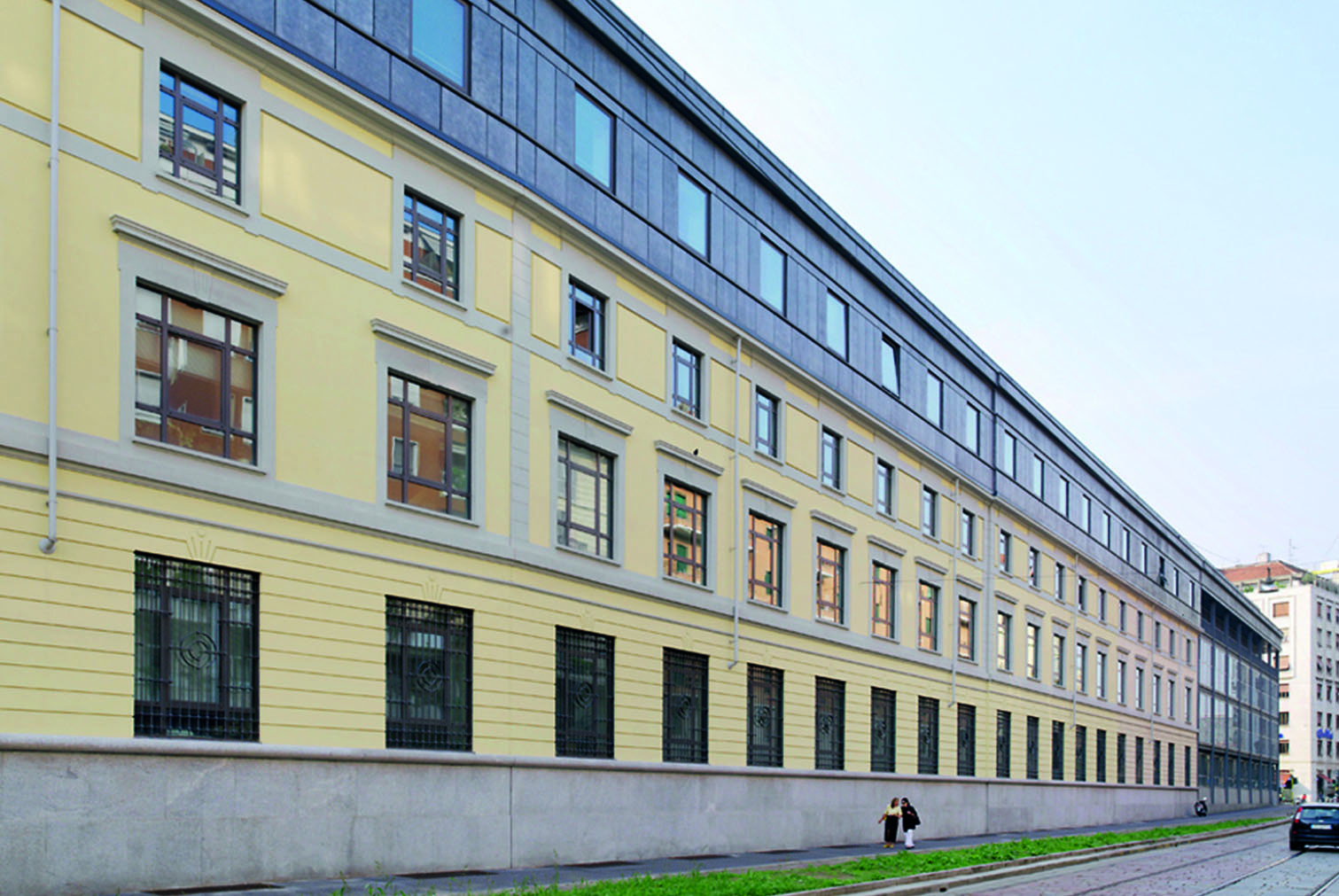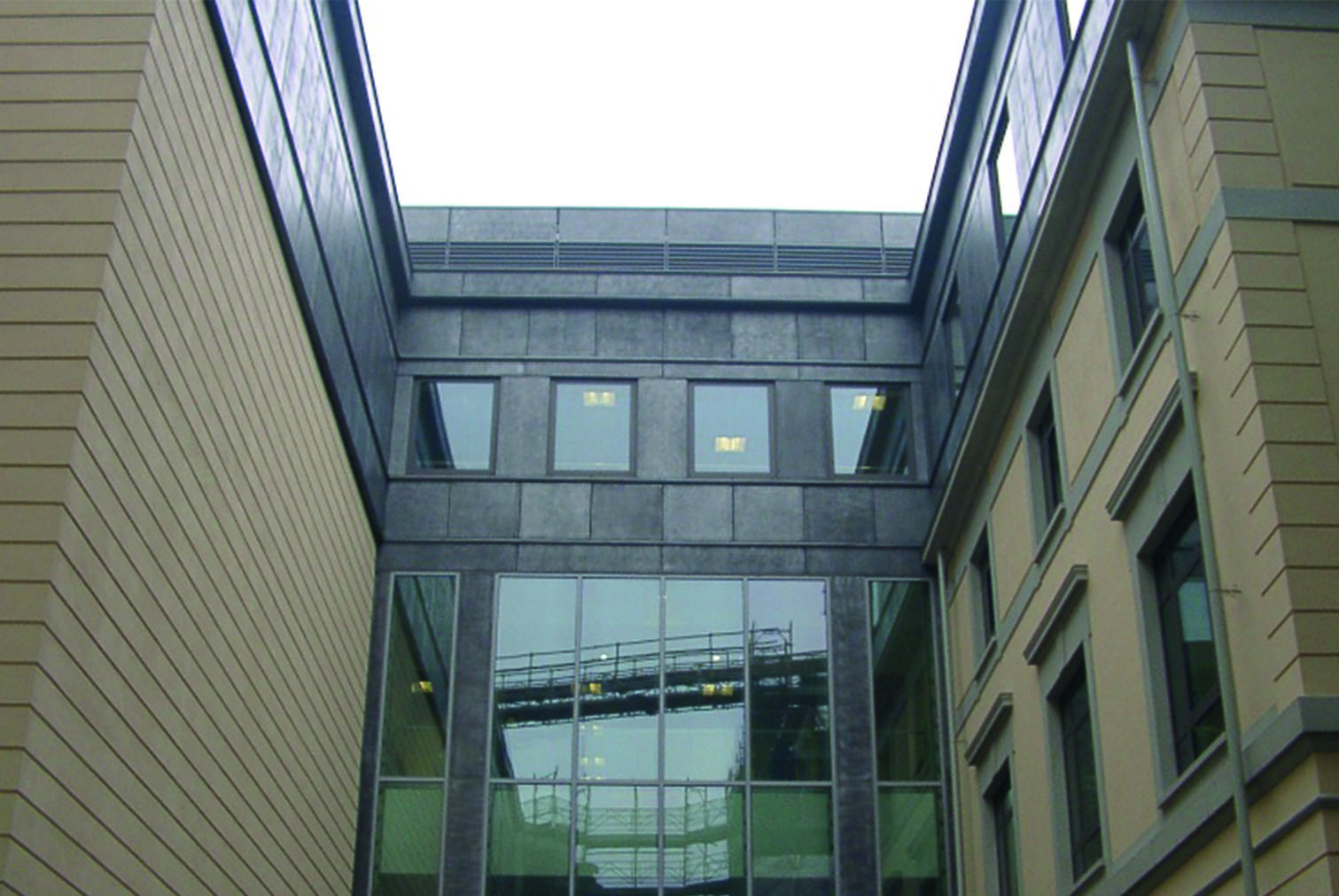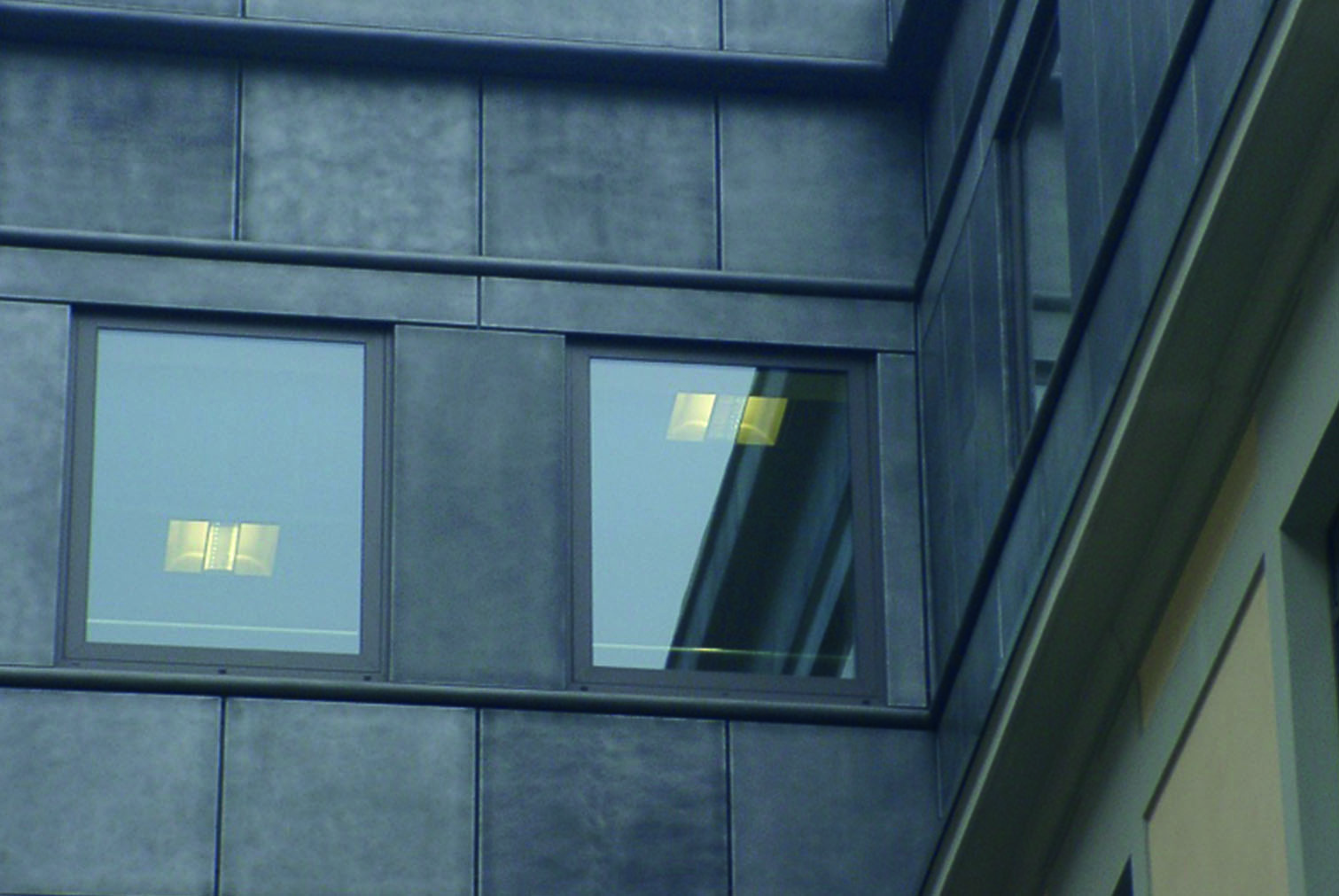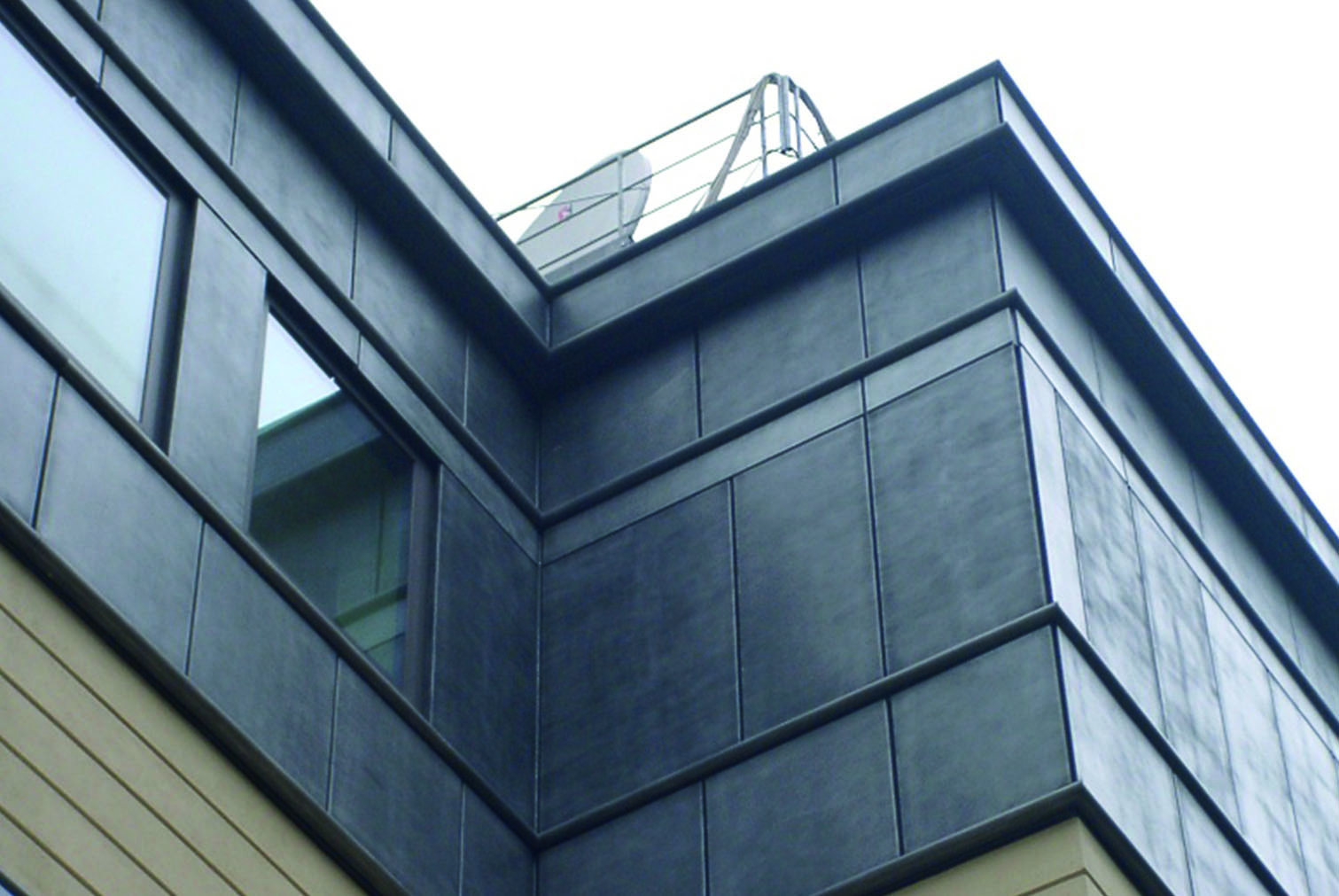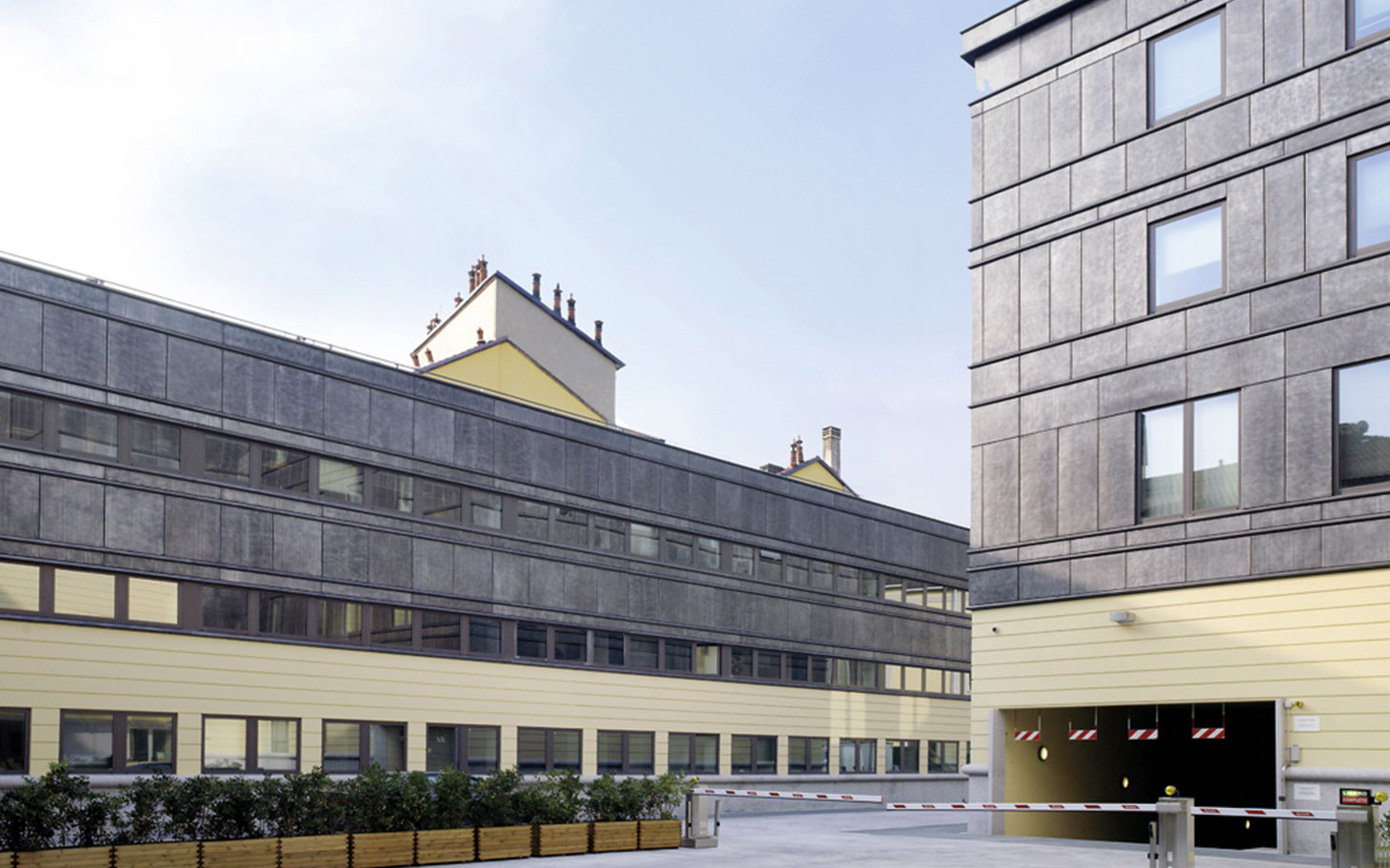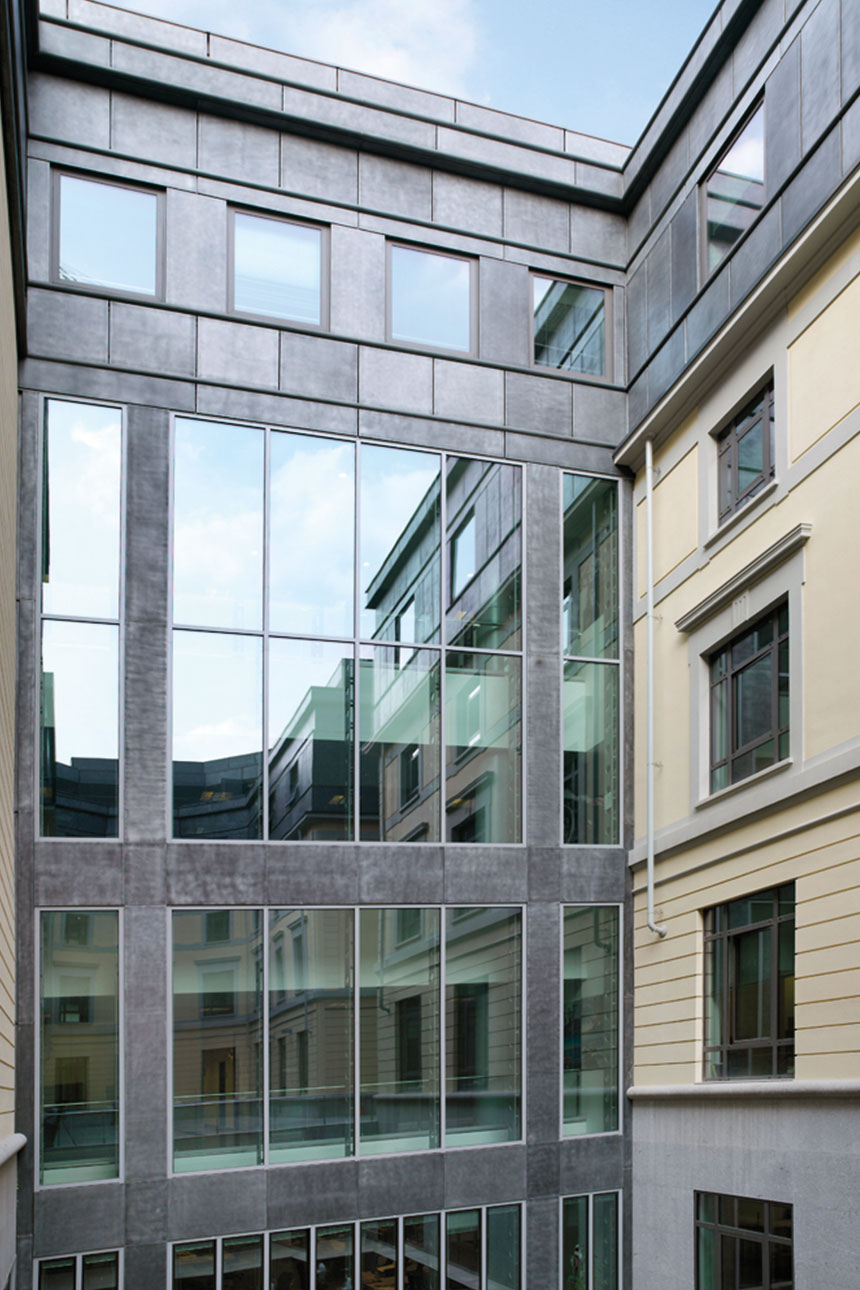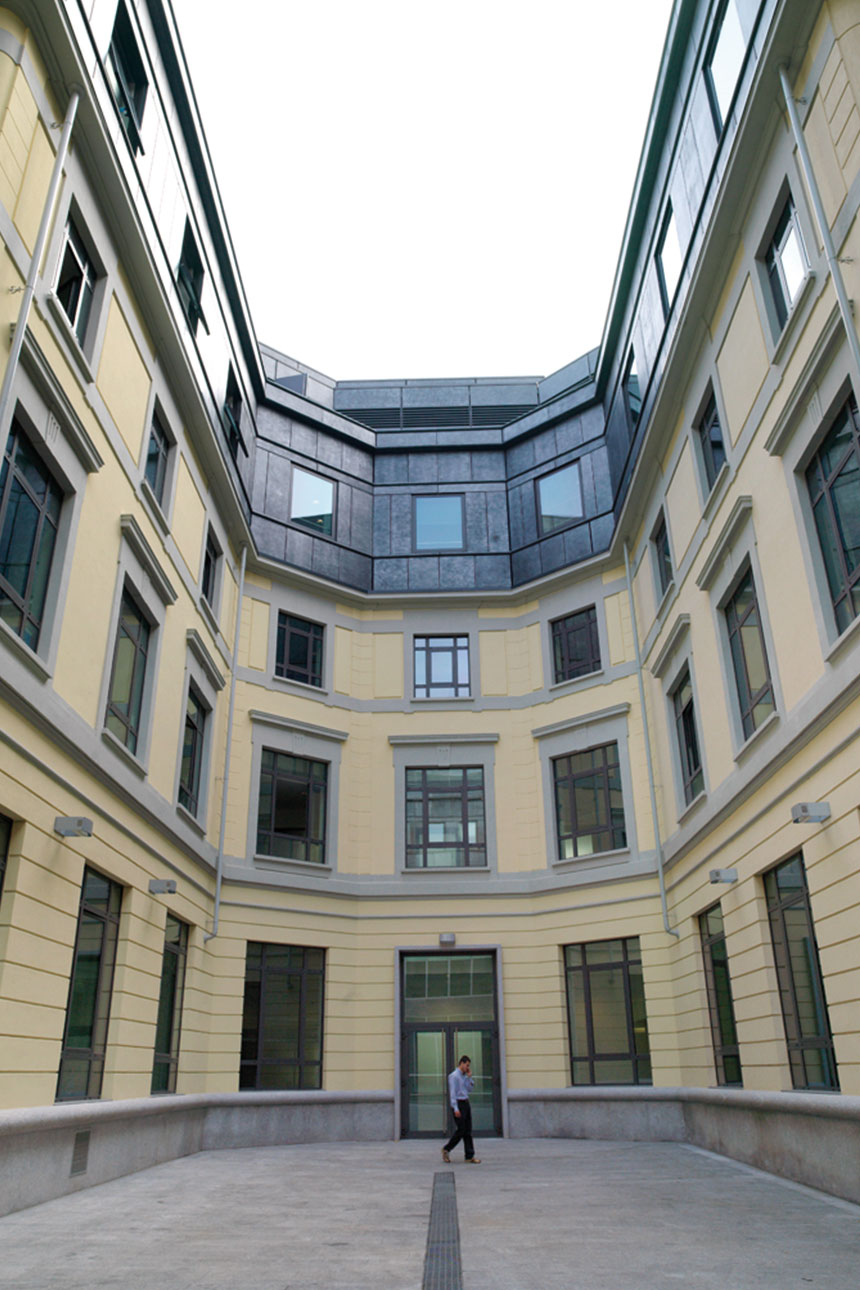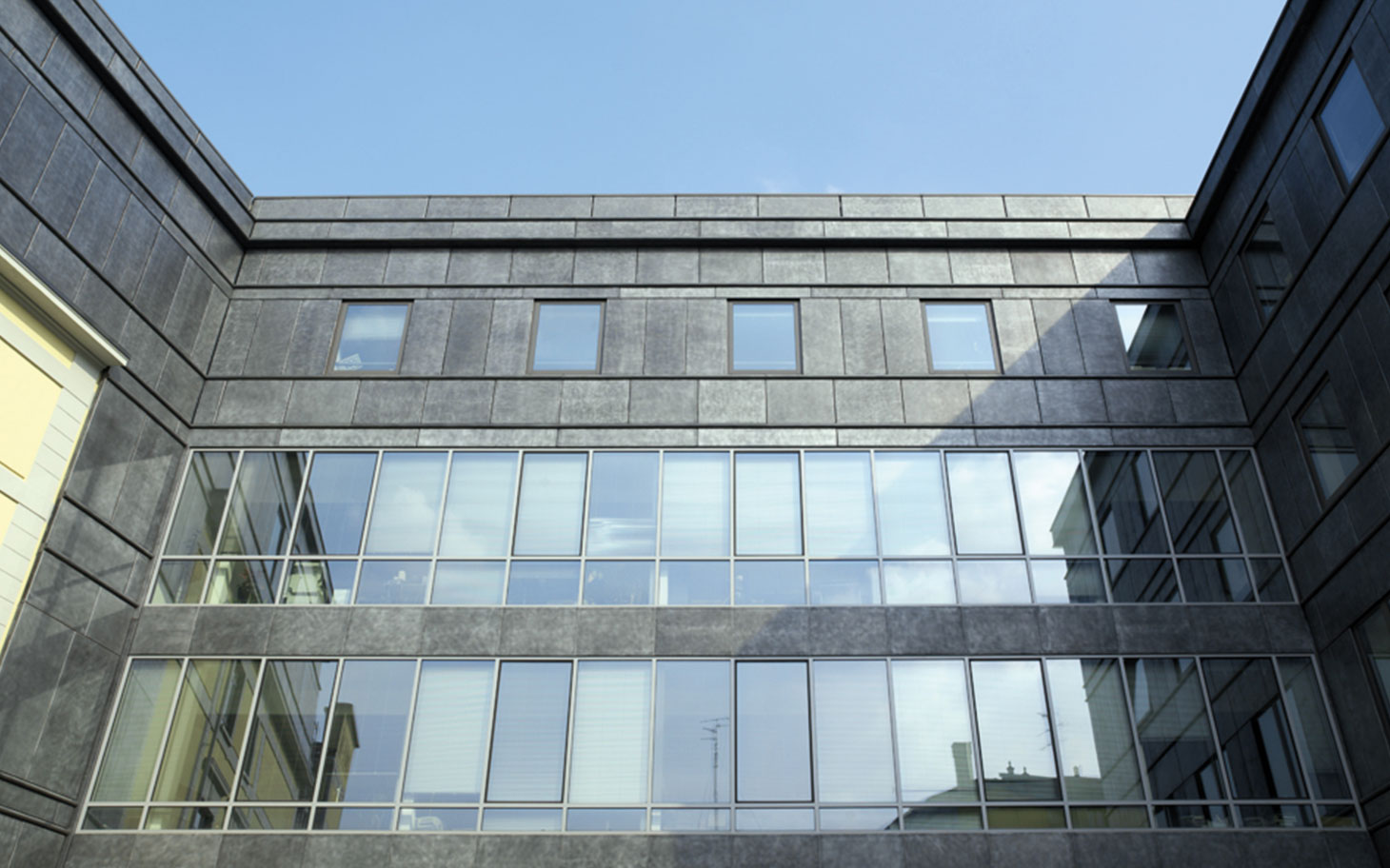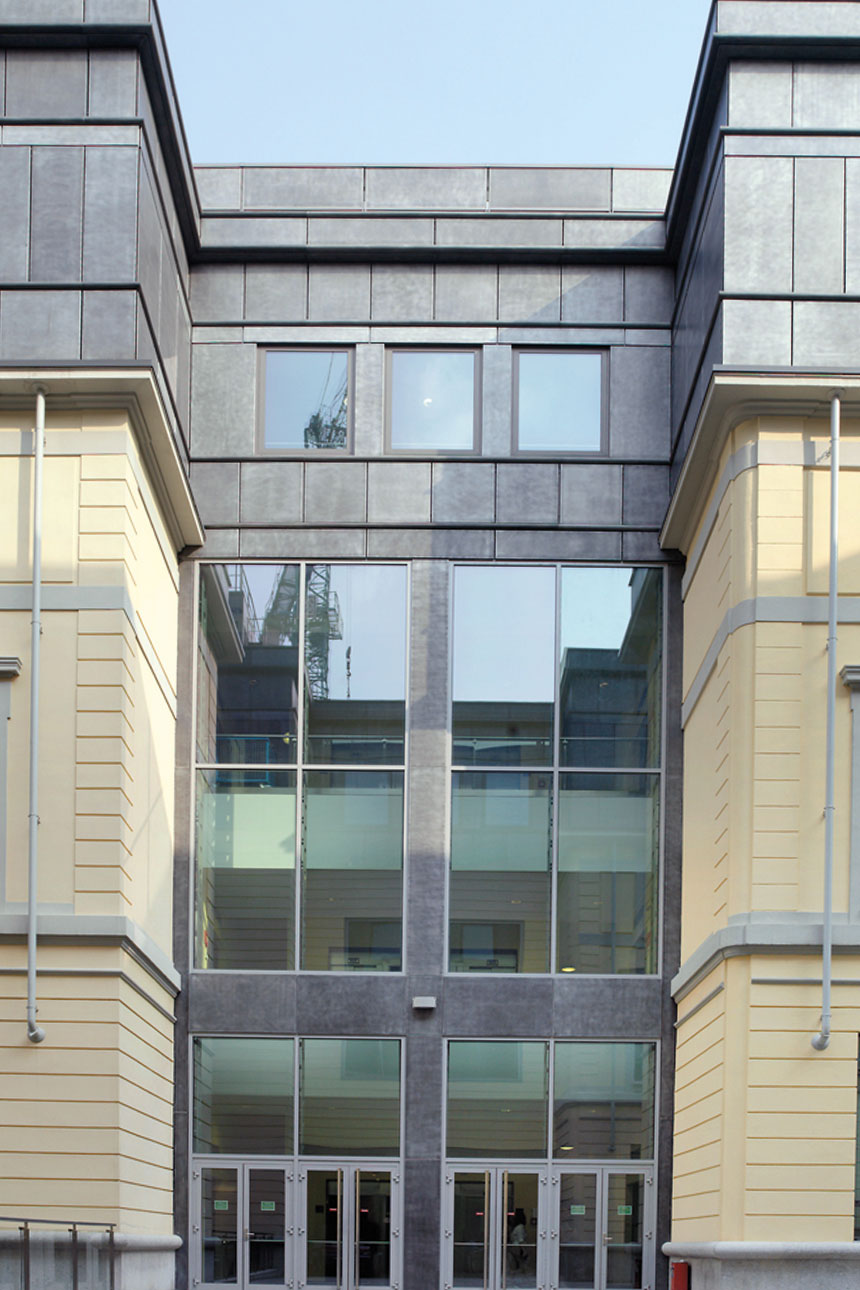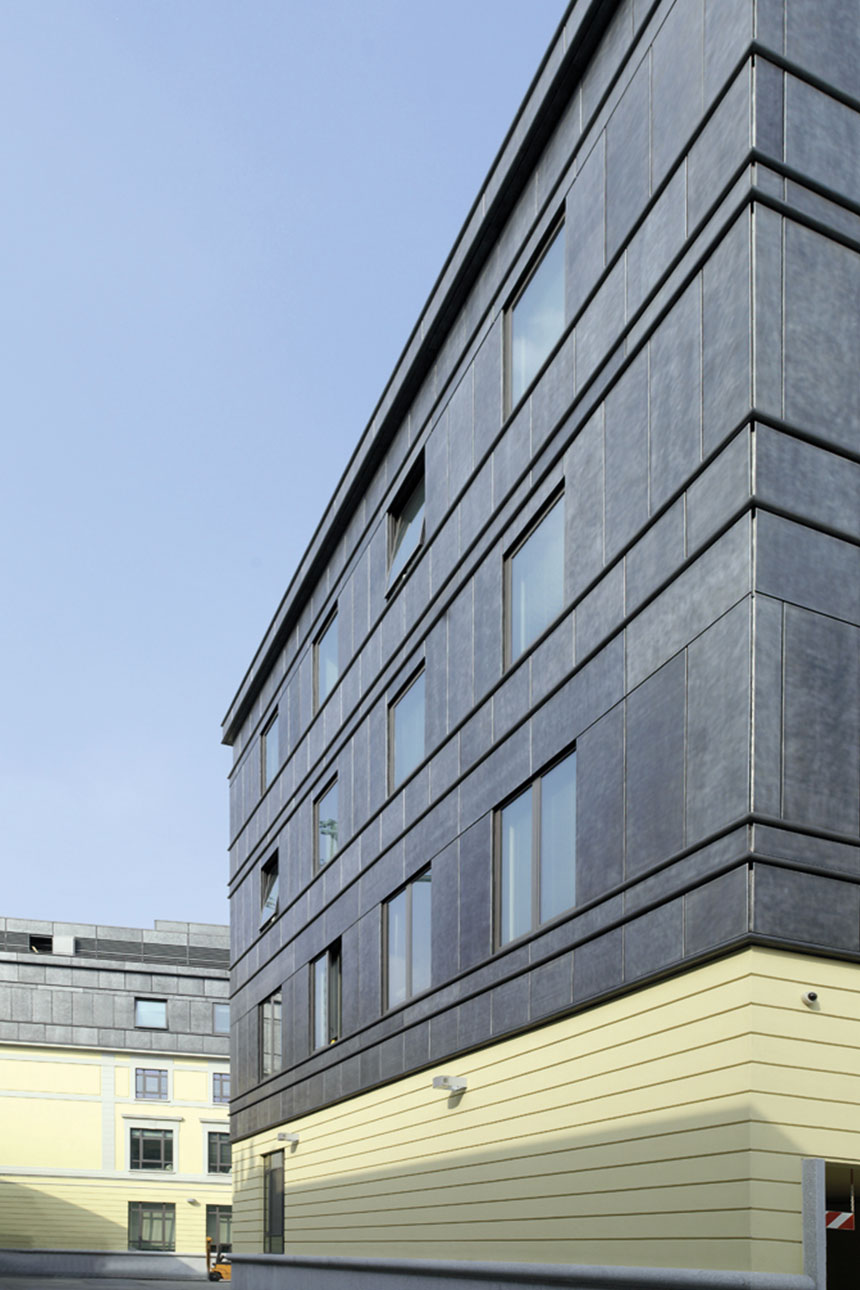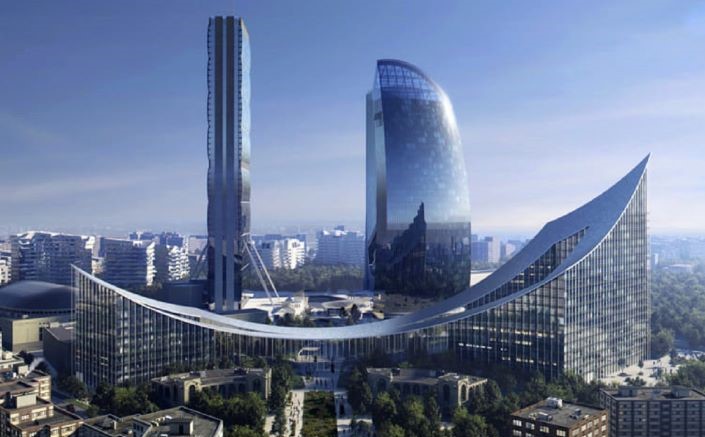The original elevations have undergone to maintenance works or partial modification which, on the whole, will confirm the original characteristics.
Building 1 Constructed in 1963, the project of Architect Rosselli, it had been built to contain the newspaper rotary presses.
Building 4 It was built in 1925 a project by Eng. Repossi and it develops in the block, continuing the building 5. Building 5 It has been built in 1907, the project of Eng. Repossi. It is “C” shaped on plan with the main body on San Marco Street and the two wings developing inside the block. Building 6,+ 6 a) They have been built in 1908 again a project by Eng. Repossi; they are located on San Marco Street in continuation of building 5, whose project elements are fully maintained.
